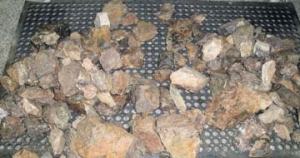NOAA Teacher at Sea
Christine Hedge
Onboard USCGC Healy
August 7 – September 16, 2009
Mission: U.S.-Canada 2009 Arctic Seafloor Continental Shelf Survey
Location: Chukchi Sea, north of the arctic circle
Date: September 15, 2009

Weather Data from the Bridge
Latitude: 730 22’N
Longitude: 1560 27’W
Temperature: 310F
Science and Technology Log
The past few days have brought much change. The depth of the ocean changed dramatically as we got closer to Alaska. The ocean went from depths of over 3500 meters to depths of less than 100 meters. More birds are showing up and we are getting about 9 hours of darkness each day. This morning at about 4 AM, the watch observed the Aurora Borealis and stars!!! I am so jealous.
FOR MY STUDENTS: Why do you think we have more hours of darkness now?
As we head home to Barrow, the science party is busily completing their “Cruise Reports” and making sure that their data is stored safely for the trip home. Much has been accomplished on this trip:
- 132 XBT deployments (measures temperature, depth)
- 8 CTD deployments (measures conductivity, temperature, depth)
- 5 Dredge operations and hundreds of pounds of rock samples collected and catalogued
- 1 Seaglider deployed and retrieved
- 2 HARP instruments retrieved and 3 deployed
- 3 Ice buoys deployed
- 8 Sonobuoys deployed
- 9585.0 lineal kilometers of sea floor mapped
- 1 METBUOY retrieved (meteorological buoy)
Coast Guard Marine Science Technicians

Science parties come and go on the Healy, each doing a different type of research. A constant for all the scientific cruises is the good work done by the Coast Guard MSTs (Marine Science Technicians). Running the winch, taking daily XBT and weather measurements, working the dredge, and helping to deploy buoys are just some of the many tasks these technicians do. The scientists could not get their experiments done without the assistance of our team of MSTs.
MST3 Daniel Purse, MST2 Daniel Jarrett, MST3 Marshal Chaidez, MST2 Thomas Kruger and Chief Mark Rieg have done a masterful job of helping the science party accomplish their goals. I asked them to tell me a little about their training for this job. Each MST attends a 10-week training school in Yorktown, VA. Most of their training involves how to clean up oil spills and inspect cargo ships which means they are usually stationed at a port. Being assigned to a ship is not the norm for an MST. But, because the mission of the Healy is specifically science, a team of MSTs is essential.

Personal Log
My commute to work is different lately. We have about 9 hours of darkness each day. It gets dark around midnight and stays dark until about 8:30 in the morning. So, walking the deck to the science lab is a bit of a challenge at 7:45. It will be strange to drive to work in a few days! On September 16th, we will depart the Healy via helicopter if all goes according to plan. It will be strange to be on land again.
We will be back in Barrow, AK on September 16th. I cannot believe that our expedition is almost over. I have learned so much from the members of the science party and the crew of the Healy. They have been very gracious and patient while I took their pictures and asked questions. Now comes the task of sharing what I have learned with folks back home. I know one thing for sure; the Arctic is no longer an abstract idea for me. It is a place of beauty and mystery and a place some people call home. I hope to convey how important it is that we continue to study this place to learn how it came to be and how it is currently changing.

Thanks to the folks at NOAA Teacher at Sea, Captain Sommer, and chief scientists Larry Mayer and Andy Armstrong for allowing me to take part in this cruise. You can be sure that I will be following Arctic research and the adventures of the Healy for many years to come.













































